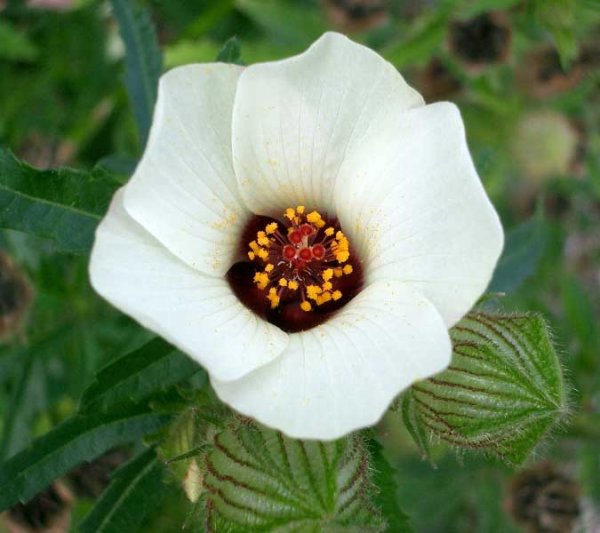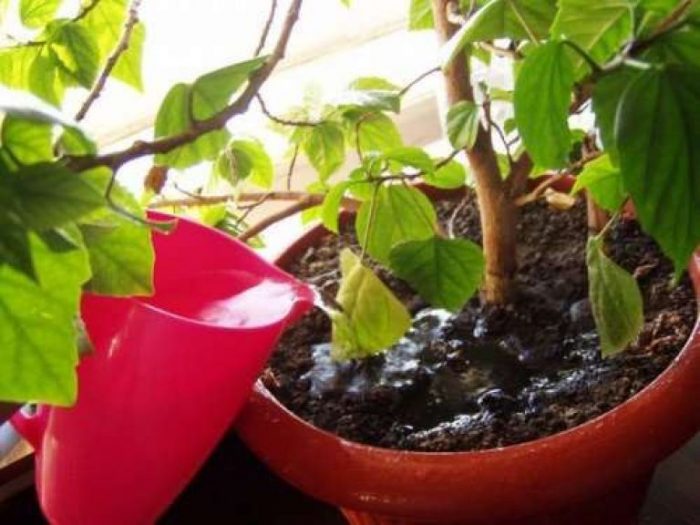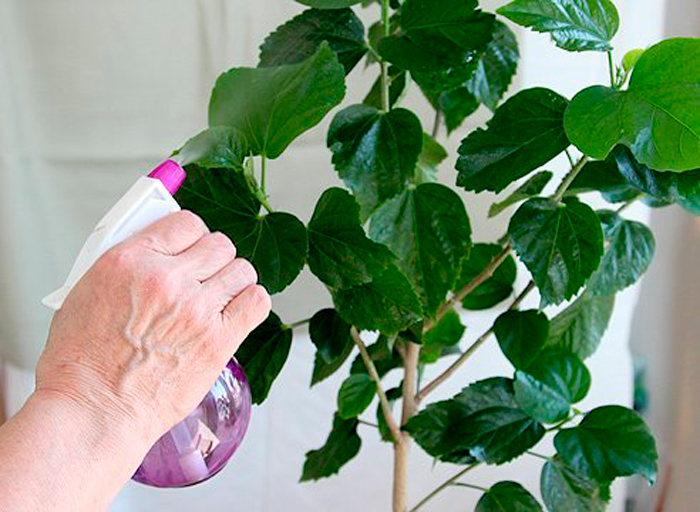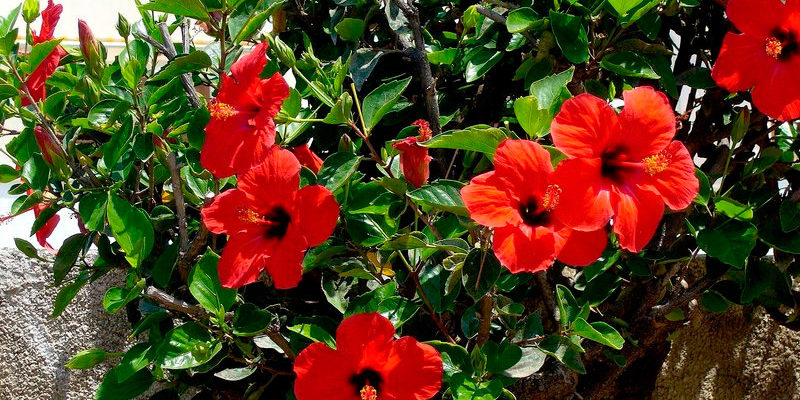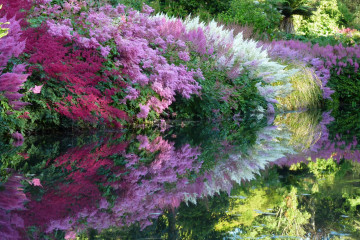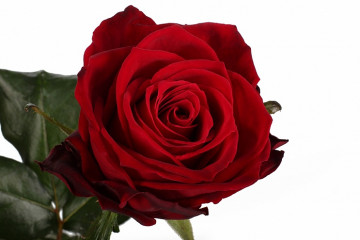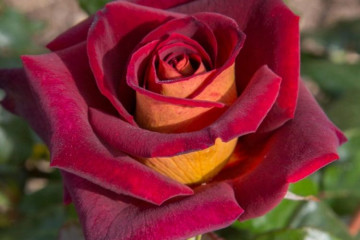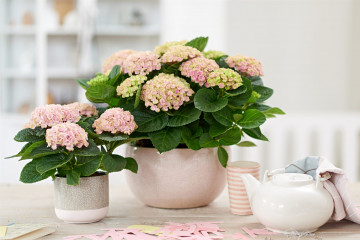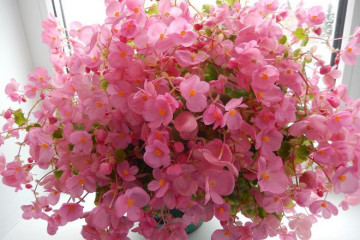Chinese indoor rose (hibiscus) - varieties, care and reproduction
Content:
The Chinese rose is an interesting species that, thanks to its resemblance to a fabulous scarlet flower, has become widely known and has been a favorite of all flower growers for many years. There are annual and perennial representatives that grow in the form of a shrub or even a small tree.
What does a Chinese indoor rose (hibiscus) look like?
At home, with proper care, the plant can reach 1.5-2 meters in height. The flower belongs to the Malvaceae family. The leaves are bright green in color, have large denticles at the edges. Unusual pistil and stamens give exotic look to the species.
The first mention of the Chinese rose appeared in Ancient Greece. There it was called mallow. Asia Minor is considered the homeland of the species, but it is more common in China and Korea. In the wild, the shrub reaches 2-3 meters, its shoots are gray.
Common species and varieties
- Syrian variety. Refers to deciduous shrubs. The inflorescences are white.
- The Northern Hibiscus is a more modest member of the species. The maximum height reaches 80 cm. Flowers can be colored pink or light yellow.
- The hybrid species was bred by breeders by crossing 3 species. The frost-resistant plant is distinguished by its large flowers, painted in a wide variety of colors.
Beneficial features
In the pharmaceutical industry, the plant is used to make medicines and food colors.
Features of caring for hibiscus at home
Hibiscus is an absolutely unpretentious indoor plant. When growing this species, you must follow simple recommendations.
Temperature
In summer, the air temperature should not exceed +25 degrees. In winter, the Chinese indoor rose can be placed in a colder room. The most acceptable temperature is +15 degrees.
Lighting
The rose needs a lot of light and protection from direct sunlight. In insufficient light, the plant is simply not able to bloom. In the warm season, experienced florists are advised to take the flower outside.
It is important to protect the Chinese rose from the harmful draft and the scorching sun.
Watering
Watering hibiscus should be carried out only with settled water at room temperature. Before moistening, the soil for this species should dry out well. Improper watering can lead to a complete lack of flowering.
Spraying
The sprinkling procedure in hot weather should be carried out twice a day. For this, spraying is carried out using a finely dispersed spray gun. In winter, spraying is performed due to the increased dryness of the air.
Humidity
Home care for a Chinese room rose is to maintain high humidity. Any procedures to increase its level must be performed with the utmost care. No water contact is allowed on buds or flowers. This will lead to the fact that the inflorescences begin to fall off.
You can use a little trick to maintain the required humidity. Any drainage is poured into the pallet under the flower and a small amount of water is poured.
Priming
The plant loves a light and nutritious substrate. Recommended composition:
- sheet soil 2 parts;
- turf 2 parts;
- humus 1 part;
- river sand 1 part;
- peat 2 parts.
The drainage layer is an indispensable element that will avoid rotting of the root system.
Top dressing
The best time for fertilizing the soil is from April to September. Top dressing for healthy growth is applied 2 times a month. It is better to use special complex preparations intended for indoor plants.
Features of winter care, the dormant period of the Chinese rose
It makes sense to take care of hibiscus in winter and feed it only if there are still flowers on it. The introduction of potassium and phosphorus is carried out in much smaller proportions.
When and how it blooms
Depending on the variety and variety, the color of flowers can have several shades:
- yellow;
- pink;
- white;
- red.
The flowering of the Chinese rose lasts only 2 days. But if you follow all the rules of care, it can be significantly extended.
Types and forms of flowers
Each variety has its own individual inflorescences. They are regular or terry.
The flowers of the plant are located singly, in the form of buds. Having blossomed, wide cups can reach 10-12 cm in diameter.
Flowering period
If pruned in May, the flowering process will last almost until winter. Carrying out rejuvenating procedures in autumn will allow you to admire the beauty of the rose throughout the summer.
Changes in resting care
This species does not have a dormant period. It can be created artificially, for which gradually reduce the watering rate, and then remove the flower in a darkened place and lower the temperature to +10 degrees.
In the spring, the moisture gradually increases, and the rose is transferred to a brighter place. Following these procedures will help stimulate the formation of new shoots.
How to trim properly
If you cut the flower correctly, this will allow it to bloom much earlier than the due date and form a larger number of shoots. It is necessary to prune dry or damaged shoots. This is important even for healthy branches that are cut in half.
It is important to remember that the formation of a bush during budding or flowering can greatly harm the rose.
To rejuvenate an adult bush, all shoots are pruned at a height of 10 cm.At least one bud must be left on each branch. In the summer, a second pruning is carried out. This procedure will allow you to get new shoots by the beginning of autumn. In this case, even in the home, the rose will bloom all winter.
How the Chinese rose reproduces
Hibiscus can reproduce in many ways. Propagation of a room rose tree is recommended by cuttings. This procedure is the fastest and most effective.
- Rooting cuttings
For grafting, you can use shoots cut from a rose during planned pruning. Slices must be processed with charcoal or Heteroauxin.
Rooting can be carried out in water or directly in a peat soil mixture. When roots appear, the seedlings must be transplanted into a large container.
- Germinating seeds
Chinese rose seeds have excellent germination and do not require special conditions for germination. Sowing is done at the end of winter.
Pre-soak the seed in any stimulating agent.
It is better to peck seeds on a wet cloth, and only then superficially plant them in the ground. When the first shoots appear, it is advisable to water them with Fundazol.
- Air layering
Reproduction by layering is carried out using apical cuttings, each of which must have at least 2 internodes. The preparation of seedlings is carried out at the end of summer.
Hibiscus transplant
The pot for the transplant is taken "back to back". Using a large container will provoke abundant formation of green foliage and leave no energy for the formation of flowers.
For a "young" plant, transplantation is carried out annually. For an adult - every 3 years.
Possible problems in growing a Chinese rose
Problems and illnesses most often arise from improper care.
- Drops buds and leaves
There are two reasons for the loss of green mass in hibiscus: lack of light or temperature fluctuations.
- Leaves turn yellow
The foliage begins to turn yellow with a lack of light and due to waterlogging of the soil. Also, the use of running water can lead to yellowing.
High levels of chlorine and calcium often lead to chlorosis.
- The rose dries
Drying of the flower can be caused by insufficient moisture or when replacing the plant to a new place.
Sometimes this phenomenon occurs at low temperatures.
- Foliage falls
Often foliage falling is caused by non-schematic watering or in case of strong drafts.
- The plant does not bloom
Lack of flowering is caused by nitrogen oversaturation. Another reason is poor lighting.
- Pests
The most terrible insects for a room rose are spider mites and aphids. Their appearance is most often caused by non-compliance with the rules of care and high humidity.
Street varieties can be saved by sprinkling with hot pepper tincture. This method is unacceptable for indoor plants. This drug may cause allergies when used indoors. At home, it is recommended to wash the rose with soapy water and treat it with a fungicide.
- Hibiscus withers
Withering occurs due to lack of water or during the adaptation period after transplanting or breeding. It may also be due to rotting of the measles system.
Signs and superstitions
There are many prejudices and beliefs around the Chinese rose. Some consider it the main reason for the divorce of spouses, while others recommend purchasing a plant for a single woman to attract a man into the house.
Despite the dangerous signs, more and more people are buying a flower for their home. Believe it or not, everyone's business. But we can say with confidence that the Chinese rose will fit into any interior and decorate it. It will purify the air in the room and, with proper care, will delight household members for many years.


